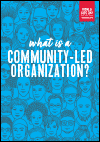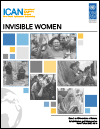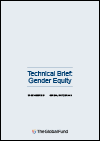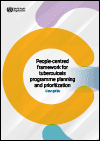What's New
Displaying results 971 - 980 of 4913

Resource | Publications,
Gender Counts, a new, first-of-its-kind review, utilizes quantitative data to provide a comprehensive profile of how gender inequality impacts girls and boys, in the low and middle-income countries in Asia-Pacific. This report focuses on South Asia. The reports describe the effects of gender inequality in the domains of health, education and transition to employment, protection and safe environment. The review identifies data gaps for children and adolescents; provides recommendations for priority gender indicators; and calls for investments in data collection, research and action, to better understand and address the key drivers of gender inequality in the region.

Resource | Publications,
Community-led organizations are led by the people who they serve and are primarily accountable to them. In the AIDS response, this includes organizations by and for people living with HIV or tuberculosis and organizations by and for people affected by HIV, including gay men and other men who have sex with men, people who use drugs, prisoners, sex workers, transgender people, women and young people.

Resource | Publications,
Communities make an invaluable contribution to the AIDS response. Communities of people living with HIV, of key populations—gay men and other men who have sex with men, people who use drugs, sex workers, prisoners, transgender people and prisoners—and of women and young people lead and support the delivery of HIV services, defend human rights, support their peers. Communities are the lifeblood of an effective AIDS response and an important pillar of support.

Resource | Publications,
The global study, Invisible Women: Gendered Dimensions of Return, Reintegration and Rehabilitation, conducted in partnership with the International Civil Society Action Network, responds to a pressing need for action-oriented research that improves our understanding of women’s roles in reintegration and rehabilitation processes, and the work of women-led organizations in supporting these processes. The study considers their experiences as critical lessons for the design and implementation of initiatives to prevent violent extremism. In doing so, it makes an important contribution to an expanding evidence base on the reintegration of violent extremists.

Resource | Publications,
With the Ministerial Declaration of March 2019 having ostensibly set the direction of international drug policy for the next decade or so,1 the launch of the 2019 World Drug Report only three months later was arguably surrounded by less expectation than the year before. Then, while missing the opportunity to provide a review of progress made in the 10 years since the Political Declaration,2 its contents still had the potential to feed directly into the deliberations surrounding the UN’s latest soft law instrument pertaining to drugs. Nonetheless, as is the case regardless of the UN’s own review cycle, the World Drug Report remains significant.

Resource | Publications,
The Annual Report of SAARC TB and HIV/AIDS Centre (STAC) is being presented indicating the programmes, activities and achievements of the year 2017. This is the Twenty-second consecutive comprehensive Annual Report STAC. This report includes a summary of the activities carried out by the Centre for the year 2017 along with introduction, goals, objectives, vision, mission and achievements of the Centre.

Resource | Publications,
The UNAIDS guidance document Fast-Track and human rights (2017) offers practical advice on why and how efforts to Fast-Track HIV services should be grounded in human rights principles and approaches, and why such efforts and responses should include the seven key programmes at a scale that can effect change. This guidance—Rightsbased monitoring and evaluation of national HIV responses—builds upon that advice, elaborating on rights-based monitoring and evaluation of HIV services with the aim to achieve human rights and equity in the AIDS response and to Fast-Track the end of the AIDS epidemic as a public health threat.

Resource | Publications,
This Technical Brief provides practical guidance for countries in using a gender equity approach to maximize the impact of programs resourced by the Global Fund to Fight AIDS, Tuberculosis and Malaria (the Global Fund). Gender equity means everyone has an opportunity to attain their full health and well-being according to their respective needs, with no one disadvantaged due to gender norms, roles and relationships. The main audience for this brief is stakeholders who are directly involved in country-level processes to develop and write funding requests for the Global Fund.

Resource | Guidelines,
The aim of the people-centred framework is to help countries to develop fully prioritized and budgeted NSPs based on a culture of making full use of the available data, which are aligned with national planning cycles and which provide the basis for a robust national response that can accelerate progress towards the goal of ending TB. In addition, applying the framework for other possible applications according to the country’s planning and policy cycle encourages the culture of data utilization and evidence translation into decision making and planning.

Resource | Publications,
This edition of UNICEF’s report on requirements for humanitarian action highlights major emergencies affecting children and families around the world, and the results achieved by UNICEF and partners in response to those crises. Noting that more violent conflicts are raging today than at any time since the adoption of the Convention on the Rights of the Child 30 years ago, the report also describes UNICEF initiatives to improve the quality of its humanitarian response in 2019 – particularly in high-threat contexts.





